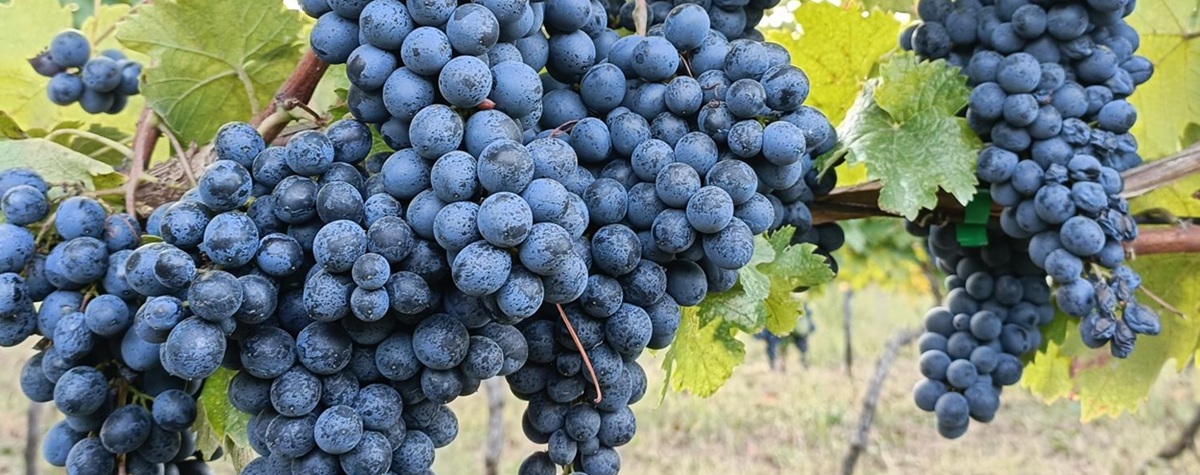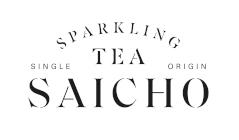Fortunately, some researchers in Texas, USA, have gone through the most important studies – as well as those on the Vitis Vea, Web of Science, and Science Direct databases – and synthesised the findings.
Cassie Marbach, Charlie Hall, and Andreea Botezatu evaluated a total of 49 papers, focusing on the impact of cluster thinning on specific wine quality parameters, particularly related to volatile compounds and polyphenolics. The studies were conducted in diverse locations, encompassing both new and old-world wine-growing regions.
Here are their conclusions about the effects of cluster thinning on wine quality and the conditions where cluster thinning can be most beneficial.
You can read the full paper, Unravelling the influence of cluster thinning on wine quality: a narrative systematic review, here.
All you need to know about cluster thinning
From Roman texts praising its impact on grape quality to its enduring presence in renowned wine regions worldwide, cluster thinning has held a consistent place in grapevine management. However, despite its historical significance and continued practice, its precise influence on wine quality remains difficult to interpret due to the vast amount of research and sometimes conflicting anecdotal evidence.What is cluster thinning?
Cluster thinning (CT), the purposeful removal of grape clusters partway through the season, aims to achieve optimal vine balance to influence key berry quality attributes like sugar content (Brix), titratable acidity, total phenolics, total anthocyanin content, and aromatic compounds.
Why is it popular?
There’s an established notion that smaller yields lead to less dilution and potentially richer flavour and aroma profiles, so many viticulturists implement practices that encourage smaller berries or lower yields.
What’s the problem?
Translating this adage into practice has proven more difficult, with various studies reporting conflicting results on cluster thinning's effectiveness in improving specific quality parameters.
How does this newly published review help?
It offers a clearer understanding of the effects of cluster thinning and the potential factors contributing to contradictory results.
So, does cluster thinning affect wine quality?
The hypothesis behind cluster thinning suggests that the practice can have a positive effect on wine quality. The idea stems from thinning grapes to obtain a better vine balance, and that by reducing the number of grape clusters/berries on the vine, the remaining grapes receive more nutrients and energy from the vine, leading to a higher concentration of sugars, aromas, and phenolic compounds in the grapes.
This can result in wines with greater complexity and depth. However, some studies have found that cluster thinning may not always have a significant impact on wine quality. Factors such as vineyard location, grape variety, and environmental conditions can influence the effectiveness of cluster thinning. Therefore, while CT can often lead to improved wine quality, its effects may vary depending on a variety of factors.
Is there a difference regarding cool and warm climates?
Yes, that’s a key factor.
In cool climates, cluster thinning aims to modify the vine balance by increasing the leaf area to fruit ratio. This adjustment optimises the vine's ability to fully ripen grapes by redirecting assimilates towards fruit development. The idea behind reducing the number of grape clusters is that resources are allocated more efficiently, fostering improved sugar accumulation, phenolic ripeness, and flavour complexity.
In warm climates, the challenges come from vine vigour and excessive vegetative growth. In such environments, cluster thinning provides an option to mitigate intense vine vigour and enhance fruit maturation. An overabundance of vine growth can lead to a range of difficulties including the formation of dense groups of leaves, reduced access of grape clusters to sunlight, and postponed ripening, all of which may negatively affect the overall quality of wine.
In warm Mediterranean climates, three studies reported positive effects of cluster thinning on wine composition (Bubola et al, 2011; Martinez-Luscher & Kurtural, 2023; Mucalo et al, 2022), while two studies found variable effects (Alba et al, 2022; Bubola et al, 2017b).
Compared to other climate classifications, studies conducted in warm Mediterranean climates demonstrated the highest percentage of positive/variable outcomes, with no studies indicating any negative effects from CT. In contrast, studies from the other three climate classifications (continental, hot, and cool) predominantly showed variable to no effects, with only a few reporting positive outcomes.
Overall, the trend suggests that CT is slightly more effective in warm Mediterranean climates. This could be due to the phenomenon observed by Poni et al (2023) where climates prone to producing overcropped vines experience a greater benefit from cluster thinning than those that are not overcropped.
In cool climates, overcropping is unlikely due to slower vine growth and ripening.
Warm continental climates yielded more variable results compared to Mediterranean climates, but still showed positive outcomes.
In hot climates, where wines can easily become overripe and excessive temperatures can inhibit photosynthesis beyond 40°C, grapevines may not benefit from cluster thinning as much (Greer & Weedon, 2012; Jiang et al, 2017; Luo et al, 2011; Venios et al, 2020; Zhang et al, 2018).
Cluster thinning is usually part of a canopy management strategy.
Yes, cluster thinning, lower leaf removal, and excess growth trimming are employed to address issues of excessive vine growth and shading. These strategies aim to improve light absorption, photosynthesis, and the microclimate surrounding grape clusters.
Both Bubola et al (2017a) and Tahmaz (2023) reported that cluster thinning, especially when combined with leaf removal, significantly improved the chemical composition of the wines studied. Nevertheless, both studies concluded that cluster thinning alone had minimal impact on improving these phenolic profiles in the wines examined.
Differences in vineyard management practices, such as pruning intensity or vine balance, could influence the sensory impact of cluster thinning. Studies like Chapman et al (2004) found that pruning interventions may have a more pronounced effect on sensory attributes compared to cluster thinning alone. Roberts et al (2007) noted that sensory characteristics were more affected by these treatments than by cluster thinning.
Most of the studies are on red varieties, so what did they learn about Cabernet Sauvignon?
Most of the findings from the studies on Cabernet-Sauvignon indicated varied or minimal effects of cluster thinning on the phenolic and volatile composition of the wine. Artem and Antoce (2018) found the main separation of wine samples was determined by the cultivation system, while grape thinning accounted for a smaller portion of the variability. Black et al (2016) suggested that the variability in their findings may have been influenced by the vines already being in a balanced state before crop reduction. However, they noted a slight increase in secondary metabolites, which is consistent with findings from Pérez-Magariño and González-San José (2004), and Pérez-Magariño and González-San José (2006). These earlier studies associated a later harvest date with higher levels of secondary metabolites. This indicates that the timing of harvest might be a more probable factor contributing to variability in phenolic development compared to crop reduction alone.
Bravdo et al (1985) – a highly cited study known for its controversial findings suggesting that un-thinned (UT) vines produce higher quality wines than CT vines – has a “vague” definition of wine quality and no statistically significant differences are observed in the quality scores, according to the American researchers. “Therefore, the claim that UT vines yield superior wines in this study seems unsupported and lacks sufficient evidence to justify such a bold conclusion,” they say.
Cojocaru and Antoce (2018) found that CT does not significantly impact the sensory attributes or anthocyanin profile of Cabernet Sauvignon wine in warmer climates. Wang et al (2018) observed no significant differences in wine quality related to terpene concentrations in their research in a cool climate. As a result, they determined that adopting this practice was not economically feasible in that specific climate.
However, studies conducted by Artem et al (2015) and Martinez-Luscher and Kurtural (2023) reported a notable increase in the volatile profile and polyphenolic potential from cluster thinning for Cabernet Sauvignon. Artem et al (2015) also supported the findings of Gil-Muñoz (2009) and Kok and Bal (2019), indicating that cluster thinning can enhance the levels of anthocyanins and potential volatile terpenes in grapes and potentially in wine.
What about other red wine varieties?
The other red grape varieties that were studied for their volatile or polyphenolic makeup were Sangiovese, Tempranillo, Cabernet Franc, Grenache, Merlot, Teran (Terrano), Syrah, Pinot Noir, Kalecik Karasi, Marastina (Malvasia bianca lunga), and Refosco dal Peduncolo Rosso. Of these seven studies, three showed variable to negative effects from CT and four showed positive effects. The four studies that found positive effects were on Sangiovese, Syrah, Pinot Noir, and Tempranillo in warm climates.
Alba et al (2022) and Condurso et al (2016) both found that thinning approximately 40-50% of the vine’s clusters resulted in increased pH, total polyphenols, proanthocyanins, and total free and bound aroma compounds. Aroma compounds, particularly esters, were found in higher quantities in thinned samples, contributing to the sensory quality.
Two studies investigating the impact of cluster thinning on Pinot Noir grapes yielded contrasting outcomes. Feng (2014) reported that cluster thinning had limited and variable effects on grape and wine volatile compositions, exhibiting substantial variation over three seasons. Nevertheless, Feng observed a significant increase in certain higher alcohols in wine following severe thinning, coupled with a decrease in others. In contrast, Rutan et al (2018) found that moderate thinning sufficiently enhanced specific wine attributes, implying that intensive thinning might be unnecessary.
Why are there disparities in these two studies?
There could be several reasons. Firstly, the climatic conditions differed markedly: Rutan et al (2018) conducted their study in a warm continental climate, whereas Feng et al (2014) operated in a hot Mediterranean climate.
Additionally, the severity of cluster thinning varied significantly between the studies. Feng et al (2014) implemented a 50% cluster removal rate, whereas Rutan et al (2018) did not specify the degree of thinning applied in their experiment. Moderate thinning may trigger specific physiological mechanisms that enhance desirable wine attributes without causing excessive stress, as observed by Rutan et al (2018). Conversely, severe thinning, as applied by Feng et al (2014), might cause more pronounced stress responses leading to different volatile compositions in the grapes and resulting wines.
Bravdo et al (1984) and Naor et al (2002) observed moderate cluster thinning led to improved wine quality, such as increased colour intensity, better flavour harmony, and enhanced aroma profiles. Naor et al (2002) found that wine sensory evaluation scores increased with decreasing crop load.
A more recent study from Turkey, conducted by Tahmaz in 2023, reported similar findings. This study demonstrated significant improvements in the chemical and sensory profiles of Syrah wines using cluster thinning and leaf removal combinations.
De Bei (2022) found contrasting effects of cluster thinning on Shiraz versus Semillon wines. White grape Semillon showed little change in wine quality, while Shiraz showed improved sensory attributes post-thinning.
Bubola et al (2023) studied Merlot wines and observed enhanced sensory quality, including increased aroma intensity, body, and overall quality, despite higher alcohol content. Notably, this improvement in wine quality did not correspond to significant changes in berry phenolic composition, indicating that alterations in wine composition were not directly mirrored in the berries.
This finding is noteworthy given the extensive body of literature on the effects of cluster thinning on berry composition. Surprisingly, studies including Bubola et al (2023) have shown that viticultural practices sometimes do not significantly change anthocyanin concentrations in berries, yet they do result in a notable increase in anthocyanins in the final wines (Kemp et al, 2011).
How important is the amount of thinning?
Generally, it appears that moderate cluster thinning tends to yield more positive effects than other thinning severities. However, climate influences the effectiveness of cluster thinning. In hot climates, where vines are more vigorous, cluster thinning has a more pronounced effect compared to warm or cool climates.
Studies have shown that moderate thinning, typically around 30-50%, can enhance specific sensory qualities such as fruitiness, body, and overall aroma intensity (Avizcuri-Inac et al, 2013; Bowen et al, 2016; Bubola et al, 2023; Gil et al, 2013; Naor et al, 2002; Tahmaz, 2023).
Another study showed more severe thinning beyond 50% often leads to diminishing returns in sensory improvements with moderate thinning being sufficient to enhance sensory quality (Rutan et al, 2018). However, King et al (2012) reported that severe thinning increased total phenolics in both study years, while moderate thinning increased phenolics for only one of the years. This suggests that while moderate CT is likely to enhance sensory aspects, its effectiveness and the need to be more severely thin is contingent on other viticultural factors such as vine balance and seasonal variation.
Is the timing important?
Roberts et al (2007) noticed that wines from thinned vines, especially those thinned at veraison, were characterised by higher overall quality, muscat, and floral aromas and flavours, as determined through sensory evaluation, concluding that cluster thinning significantly influenced the sensory profile of their wines.
What about white grape varieties?
Typically, white wines may be less inclined to undergo cluster thinning due to the lesser need for acidity reduction through full grape ripening, given that acidic, crisp white wines are often desired. However, there were three notable studies exclusively examining white wine varieties, each yielding varied outcomes.
Škrab et al (2021) investigated the impact of light cluster thinning (around 20%) on Ribolla Gialla sparkling wines grown in a warm climate and found that tasters preferred non-CT wines. This study suggests only extreme cases of overproduction benefited from CT.
In a study by Suklje et al (2022), focused on Welschriesling in a cool climate region, CT showed a significant impact on wine quality during cooler vintages with over 40% yield reduction, leading to increased concentrations of 3-mercaptohexyl acetate, associated with tropical fruit aromas, in wines. Conversely, in a warmer vintage with only a 30% yield reduction, CT did not affect fundamental wine parameters such as alcohol content, titratable acidity, and pH. However, varietal thiols tended to be higher in CT wines.
Naor et al (2002) examined Sauvignon Blanc and observed positive effects of (30-60%) cluster thinning on sensory evaluations, whereas van Schalkwyk (1995) found no improvement in Chardonnay quality with cluster thinning, deeming the practice economically unviable. The Chardonnay was from a warm climate where cluster thinning may lead to advanced grape maturation.
What about the effect of a vineyard’s initial loading?
The impact of cluster thinning can vary due to multiple factors, including vineyard location, seasonal climate conditions, grape variety, and the severity of thinning applied. An additional, and perhaps underexplored, variable is the initial crop load per vine, measured in kilograms per vine (kg/vine).
Despite its potential importance, there appears to be limited research specifically addressing the role of initial crop load in moderating the effects of CT on wine quality. To date, no published studies have compared the impact of CT on high-yielding vineyards versus already low-yielding vineyards, controlling for other factors such as cultivar, pruning practices, climate, and irrigation regimes.
The review by the Texas-based researchers sought to fill that gap by categorising experimental vineyards into two groups based on initial crop load: high-yielding (> 3 kg/vine) and moderate/low-yielding (< 3 kg/vine). Of the 23 studies that disclosed data on initial yield per vine, 11 were classified as high-yielding and 12 as moderate/low-yielding. Among the high-yielding vineyards, 10 studies reported either no effect or a variable effect from CT, whereas only five of the moderate/low-yielding studies reported similar outcomes. The researchers say: “This suggests that high-yielding vineyards may benefit less from CT than moderate-yielding vineyards.”
What about the economic impact of cluster thinning?
The consensus is that CT is not feasible for many vineyards. Sun et al (2012) discuss the economic implications of cluster thinning, highlighting that higher grape prices would be necessary to compensate for lost yields and additional production costs associated with cluster and shoot thinning.
Despite the economic impact of reduced yield found by Condurso et al (2016), they concluded that the overall improvement in wine quality, particularly in aroma and colour compounds, makes cluster thinning a viable option in the Mediterranean climate. This conclusion contrasts with that of Karoglan et al (2014), who raise concerns about the economic feasibility of cluster thinning due to the higher grape prices needed to compensate for yield loss and additional production costs.
McDonnell (2011) reached a similar conclusion, highlighting that the financial costs associated with CT outweigh the sensory benefits, as the practice did not significantly enhance wine quality to justify a higher bottle price or price per ton. Another study supporting the view that CT is not economically feasible even included the increased revenue from selling the thinned grapes to make sparkling or low-alcohol wines (van Schalkwyk et al, 1995).
One study, focusing on verjus production using CT grapes, found that the practice could be financially profitable if the grapes were sold for cooking and condiments production and the final harvest sale price significantly increased (Marbach et al, 2023).
Lastly, the most detailed economic analysis of CT comes from Preszler (2012), who introduced a new analytical model demonstrating how growers can determine their required price at a given yield to compensate for losses. However, when considering the willingness to pay determined through their consumer research, the substantial price increases necessary to offset losses from CT were not deemed feasible.
So, what’s the conclusion?
The new study concludes: “CT can influence wine quality by affecting sensory attributes, volatile compounds, and polyphenol content. However, the extent of its impact varies widely based on several factors, including grape variety, vineyard location, climatic conditions, and the timing and severity of thinning interventions. The sensory analysis revealed that CT generally enhances the aromatic complexity and flavour profile of wines, contributing to greater depth and richness. Studies employing GC-MS (gas chromatography-mass spectrometry) consistently demonstrated that CT alters the volatile composition, leading to more desirable aroma characteristics. Similarly, HPLC (high-performance liquid chromatography) analyses showed that CT can increase polyphenol content, improving the wine's colour intensity.
“Despite these benefits, the economic feasibility of CT remains contentious. The practice often results in reduced yields, which necessitates higher grape prices to offset the loss. While some studies, such as those conducted in Mediterranean climates, found that the improvement in wine quality might justify higher costs, other research, particularly in regions with different climatic conditions, questioned its overall viability.”
‘Unravelling the influence of cluster thinning on wine quality: a narrative systematic review’ by Cassie Marbach, Charlie Hall and Andreea Botezatu was published in OENO One (Vol. 59 No. 1, 2025). You can read the full paper here.

 English
English French
French







.png)


